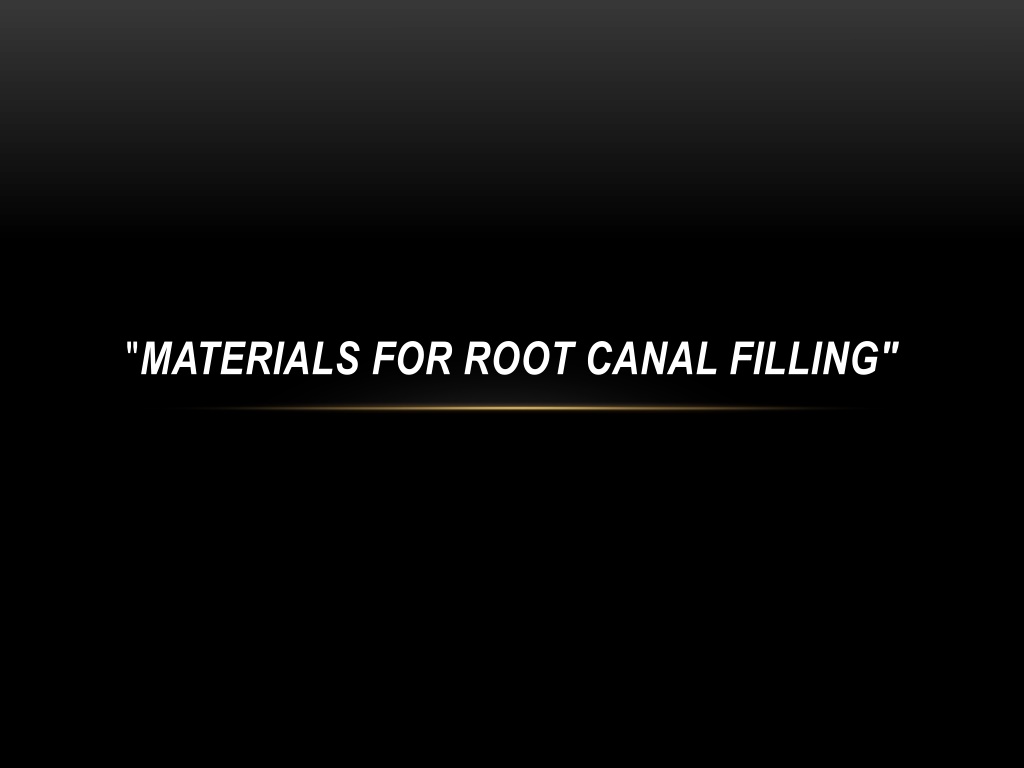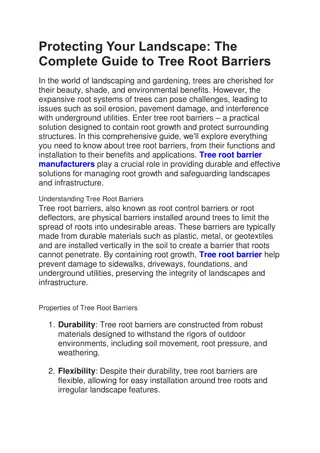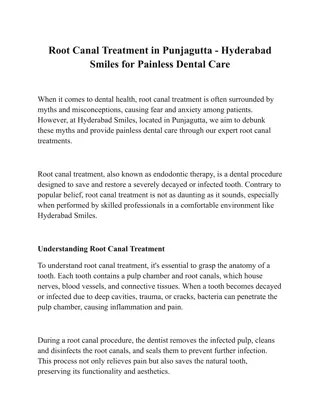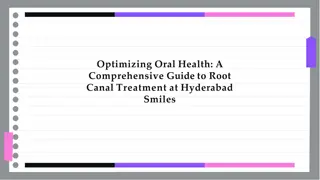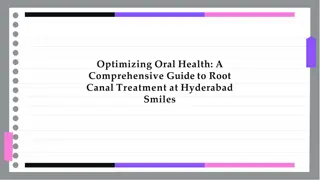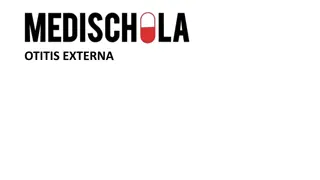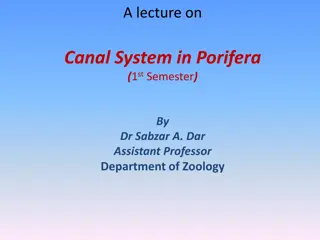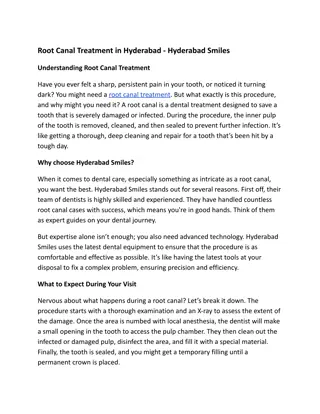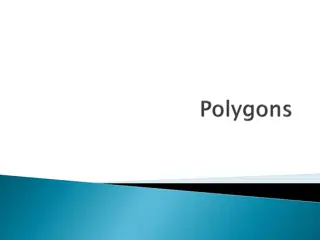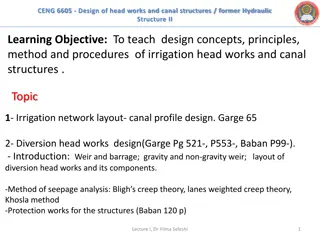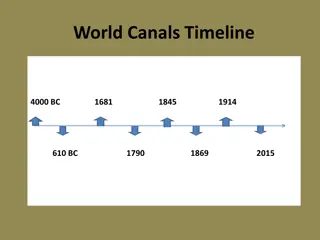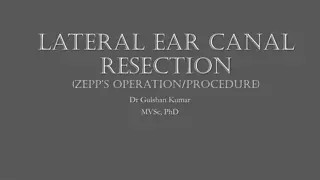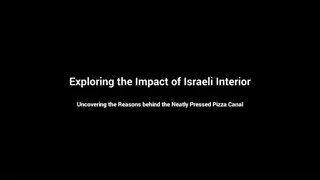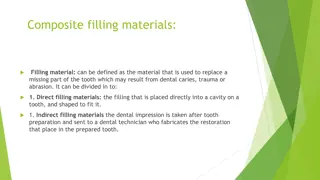Understanding Materials Used for Root Canal Filling
The final step in endodontic treatment involves root canal filling, aiming to prevent exchange between the canal and periodontium. Pulpectomy is indicated for various dental conditions and is carried out in interim or permanent teeth. Different methods of devital extirpation are utilized in the process. The requirements for filling materials encompass biological, physical, chemical, and technological aspects. The classification of materials for root canal filling includes temporary and permanent pastes categorized based on different compositions.
Download Presentation

Please find below an Image/Link to download the presentation.
The content on the website is provided AS IS for your information and personal use only. It may not be sold, licensed, or shared on other websites without obtaining consent from the author. Download presentation by click this link. If you encounter any issues during the download, it is possible that the publisher has removed the file from their server.
E N D
Presentation Transcript
The final step in endodontic treatment is root canal filling. The purpose of root canal filling: warning exchange between the channel and periodontiti
Pulpectomy (devital or vital pulpectomy) Indications: 1. is carried out in an interim single rooted teeth or molars with acute diffuse form a temporary single rooted teeth or molars with acute diffuse and chronic gangrenous pulpitis; 2. the presence of bone weakening pattern cross members and pulping cortical plate wells on the radiograph of the tooth; 3. as a stage in the conservative treatment of all forms of periodontitis in temporary and permanent teeth; acute, chronic gangrenous pulpitis the permanent teeth of all groups of teeth formed at the tip.
METHODS OF DEVITAL EXTIRPATION: The method is carried out in two visits. 1. Active tooling cavity - removing softened dentin - pulp horns autopsy put in on devital paste (arsenic paste, paraformaldehyde) - setting a temporary filling. 2. Active removal of temporary fillings - the disclosure of the tooth cavity - removal of coronal pulp - removal of pulp coronal - instrumental and pharmacological treatment of root canal - root canal filling to physiological opening of the tooth root under X-ray control - setting the insulating gaskets, seals constant.
REQUIREMENTS FOR FILLING MATERIALS Requirements for endodontic filling materials, can be combined into three groups. I. Biological requirements: filling material must have antiseptic and antibacterial properties; not to irritate the periodontal tissue. II. Physical and chemical requirements: filling material must be characterized by high adhesion, which provides adhesion to the wall of the channel, it must be tightly closed apical foramen and the dentinal tubules; I should not have shrinkage not dissolve in interstitial fluid, have radiopacity not stain teeth. III. ITechnology requirements: filling material must have plasticity, easily introduced into the root canal, if necessary - to succumb to remove from the channel.
CLASSIFICATION OF MATERIALS FOR ROOT CANAL FILLING I. Filling material: 1. Temporary 2. II. Permanent Pastes based on a mixture of long-acting antiseptic; III. Pastes on the basis of antibiotics and corticosteroids; IV. Pastes zinc evgenolovye prepared ex tempore with the addition of X-ray contrast agents V. Pastes based on metronidazole; Pastes based on calcium hydroxide; Materials based on resorcinol-formalin
PASTES ON THE BASIS OF A LONG- ACTING ANTISEPTICS The composition of this group of drugs usually include potent antiseptics: thymol, creosote, iodoform, camphor, menthol, etc. Representatives: 1. Tempofor 2. Yodent 3. Yodeks Key features include: - Antiseptic properties - Paste radiopaque - Slowly dissolve in the channel - Not harden - Ease of insertion and removal - Low toxicity - The absence of toxic effects on periodontal
PASTES ON THE BASIS OF ANTIBIOTICS AND CORTICOSTEROIDS Representative: "Fort Septomiksin" Properties: - Radiopaque; - Reduces inflammation and allergic reactions; - Antibacterial and antifungal activity; - Harmless for the periapical tissues.
IODENT (Yodoformnaya paste) Available in two forms: - not hardening paste - hardening paste. Indications: - Not applicable hardenable paste as a therapeutic and prophylactic agent in cases of acute and chronic periodontitis, treatment of infected channels, pulpitis, granulomatous granulating and periodontitis, as well as re-infection after sealing. - Hardening paste is applied to the permanent canal filling of teeth with pulpitis, acute and chronic periodontitis, for canal filling of primary teeth and prevents the formation of the underlying tooth germ
"Iodent": - It has disinfectant and antibacterial properties. - Contains strong antiseptics - iodoform, thymol and camphor -Develops the protective properties of the periapical tissue - Well tolerated by the body, in the case of a possible withdrawal of the apex, the reaction low. - Pasta is radiopacity. -Allows canal filling in a few visits, - There is no postfilling pain.
Hardening paste "Iodent": - has a prolonged disinfectant and bactericidal action, - it comprising: a chlorophenol; camphor; iodoform; - + Radiopaque additive; - filler stimulates osteoblastic bone formation at the apex, as well as providing a radiopaque material. When multi-stage treatment of channels are not filled with hardening paste "Iodent" and a temporary filling material is left for a few days.Then, using a needle or root canals filled with purified kanalonapolnitelya settable paste "Iodent" which is structured for 72 hours.
PASTE ZINC EVGENOLOVYE EX TEMPORE WITH THE ADDITION OF RADIOPAQUE SUBSTANCE Properties: - Antibacterial - Soothing, calming effect -Anti-inflammatory effect - Easy to dry canal Representatives: Cariosan Evgetsent-In Evgetsent-P Zinoment IRM (Dentsply)
Pastes based on metronidazole Representatives Grinazol Features: - inhibits anaerobic microflora of root canals - stops the catabolic tissue damage by blocking the inflammation at the biochemical level - There were no allergic reactions or habituation
PASTES BASED ON CALCIUM HYDROXIDE Representatives Gidroksiapol-85 Biocalex, Sealapex, Endokaleks Properties: - has a bactericidal effect - destroys necrotic tissue - promotes osteoporosis, and cementogenesis dentinogenesis
MATERIALS BASED ON RESORCINOL- FORMALIN. Benefits: Has an antiseptic effect It does not resolve the root canal Slowly solidified Easy to enter Radiopaque It does not violate the properties of other materials It has mummified action Do not disturb the formation of the root Do not break the root resorption of deciduous teeth Indications: Temporary teeth began to root resorption Temporary and permanent teeth with unformed roots.
